#Māori Cultural Capability
Explore tagged Tumblr posts
Text
New Zealand Tertiary Education: Unveiling the Hidden Dangers of Overlooking Critical Aspects
New Zealand Tertiary Education: Current Risks I’ve written about this before, but at the expense of sounding like a broken record I’m going to say it again: When we overlook essential aspects of tertiary education like adult literacy, language and numeracy (LLN), Māori cultural capability, Pacific cultural centeredness, and neurodiversity support, we’re courting trouble at various levels in…

View On WordPress
#adult literacy#community development#educational inequality#educator professional development#Māori Cultural Capability#neurodiversity in education#New Zealand tertiary education#Pacific cultural centeredness#Social Mobility#vocational training
1 note
·
View note
Note
Oh wow, so nice that New Zealand doesn’t consider an army that raped, mutilates and kills brown kids to be a bunch of terrorist barbarians but they consider the brown people defending themselves to be so.
Can’t say I’m shocked, considering what you fucking animals have done to the Māori for centuries, but it’s nice hearing one of you admit openly that white lives matter more and that whites committing terrorism against POC is perfectly fine.
Glad to know that people not being their governments except when it comes to Israelis now has the exception extend to jews when they are in the diaspora and their diaspora government.
Yes, the New Zealand government has been vile to Māori. And it continues to do so as David Seymour wants to get rid of Te Tiriti O Waitangi. Which I have spoken out about before on this blog.
I've also said on this blog before that I voted for Te Pati Māori last election.
What I haven't said before so I'll say now is that my work does a Māori cultural capability course every year. It is lead by Māori to make everyone understand Māori culture and to unlearn racism. It is not compulsory but I do it every year as it gets updated every year and I want to make sure I'm the best ally I can be.
It's funny that you're sending all of this in an ask knowing nothing about New Zealand history. Because New Zealand has does more than other countries to try to remedy the awful shit done in the past. Is it as good as it can be? No there is so much more work to be done.
Also I fucking dare you to give me some New Zealand history regarding Māori oppression, because I doubt you actually know anything of substance.
But I guess assuming jews are automatically racist towards brown people is the new trope.
And I don't care if this doesn't change your opinion on if I'm racist or not, your opinion doesn't matter to me, what matters is that my actions speak for themselves.
And to address your first bit, I think we need to take away big words from you until you can learn to use them properly. I explained the difference according to law in my country. To me, that's the law and what I'll be following.
Also, hezbollah is not defending themselves, they attacked first by carpet bombing northern Israel. Unless you're conflating hamas and hezbollah, which whilst they are both proxies of Iran, they are two different proxies. More of a reason to keep big boy words from you till you can understand them
60 notes
·
View notes
Text

Title: Kurangaituku Author: Whiti Hereaka Date Finished: 26 January 2025 Rating: 5/5
Wow—what an amazing and magical book! Kurangaituku has become an all-time favourite for me—I loved everything about it.
Feminist mythical and historical retellings are a popular genre at the moment, and I’ve eagerly immersed myself in this trend, enjoying books like Circe, Clytemnestra, and Kaikeyi. Discovering a retelling set in the Māori world brought me so much joy, and I couldn’t help but love this story. It avoided a common pitfall in some of these retellings: the tendency to make female characters so “perfect” and faultless to justify their actions, make them blameless and counter historical vilification. Instead, Kurangaituku offers a more nuanced portrayal.
Kurangaituku’s story illuminates the suffering many women endure simply because they are women. Yet, she is far from a flawless or wholly sympathetic character. She is complex: capable of rage, brutality, and naivety. She captures a man to gain knowledge by consuming his brain—an act of both curiosity and violence. Indeed, it does not entirely villify Hatupatu either - for if I had been captured and imprisoned by a man, would I too not try to gain his trust so that I might survive, so I might escape? Thus, Kurangaituku is not blameless, but her struggles to understand her place in the world, especially in relation to the Song Makers, make her deeply human and relatable.
The prose in this book was breathtaking. It had a poetic quality that resonated with me, reminding me of the kind of poetry I’ve been drawn to—and even written—myself.
The story delves into metaphysical and existential questions: what it means to be and not be, to exist and not exist, to be alive and dead, human and non-human, or caught in the liminal spaces between these states. Kurangaituku’s confusion and isolation—the inability to be defined or rooted—are deeply moving and relatable.
Before reading the book, I looked up the original myth of Hatupatu and Kurangaituku as part of my own cultural reconnection journey. This enriched my reading experience, as I appreciated how the book reimagined the story while expanding it into something profoundly unique. I particularly enjoyed following Kurangaituku into the underworld, exploring her experiences of “death” and encounters with atua. It was a beautiful way to be introduced to Māori mythology and its richness.
This is a book I want to own, proudly display on my bookshelf, revisit in the future, and lend to others. I’m also excited to read Hereaka’s other works on pūrākau.
2 notes
·
View notes
Text
‘Onwards and upwards’ may be a deeply familiar metaphor for progress, but in terms of the economy that we know, it has taken us into dangerous terrain. ‘Humanity can affect the functioning of its own life-support systems,’ says the ocean scientist Katherine Richardson. ‘There are tipping points we are pushing on. How does this change our definition of progress?’
For over 60 years, economic thinking told us that GDP growth was a good enough proxy for progress and that it looked like an ever-rising line. But this century calls for quite a different shape and direction of progress. At this point in human history, the movement that best describes the progress we need is coming into dynamic balance by moving into the Doughnut’s safe and just space, eliminating both its shortfall and overshoot at the same time. That calls for a profound shift in our metaphors: from ‘good is forwards-and-up’ to ‘good is in-balance.’ And it shifts the image of economic progress from endless GDP growth to thriving-in-balance in the Doughnut.
The image of the Doughnut, and the science behind it, might be new, but the sense of dynamic balance that it invokes resonates with decades of thinking about sustainable development. The idea of Earth as a spaceship—a self-contained living capsule—gained popularity in the 1960s, prompting the economist Robert Heilbroner to point out that, ‘As in all spaceships, sustained life requires that a meticulous balance be maintained between the capability of the vehicle to support life and the demands made by the inhabitants of the craft.’ In the 1970s, the economist Barbara Ward—a pioneer of sustainable development—called for global action to tackle both the ‘inner limits’ of human needs and rights and the ‘outer limits’ of environmental stress that Earth can endure: she was effectively drawing the Doughnut with words rather than with a pen. Later, in the 1990s, the campaigning organisation Friends of the Earth advocated the concept of ‘environmental space,’ arguing that all people have the right to an equitable share of water, food, air, land, and other resources within the carrying capacity of the Earth.
In some cultures, the idea of thriving in balance goes back much further. Pan metron ariston, said the Ancient Greeks: ‘all things in good measure is best.’ In Maori culture, the concept of well-being combines spiritual, ecological, kinship and economic well-being, interwoven as interdependent dimensions. In Andean cultures, buen vivir—literally ‘living well’—is a worldview that values ‘a fullness of life in a community with others and with Nature.’ In recent years, Bolivia has incorporated buen vivir into its constitution as an ethical principle to guide the state, while Ecuador's constitution became the world's first, in 2008, to recognise that Nature, or Pachamama, ‘has the right to exist, persist, maintain and regenerate its vital cycles.’ Such holistic and balanced conceptions of well-being are reflected in the traditional symbols of many ancient cultures, too. From Taoism's yin yang and the Māori takarangi to Buddhism's endless knot and the Celtic double spiral, each design invokes a continual dynamic dance between complementary forces.
-Kate Raworth, Doughnut Economics: Seven Ways to Think Like a 21st Century Economist
4 notes
·
View notes
Text
Experiencing Excellence: The Benefits of Studying in New Zealand
New Zealand has become one of the most sought-after destinations for international education—and for good reason. With a perfect balance of academic excellence, cultural richness, and natural beauty, New Zealand offers a student experience unlike any other. From globally recognized universities to safe, inclusive communities, the country creates the ideal environment for learning, growth, and success.
If you're considering studying abroad, here are the key benefits of choosing New Zealand.
High-Quality Education
New Zealand’s education system is consistently ranked among the best in the world. All eight of its universities are featured in global rankings and known for their innovative teaching methods, strong research capabilities, and practical learning approaches. Whether you are pursuing undergraduate, postgraduate, or vocational training, you can expect a high standard of education that prepares you for real-world success.
Globally Recognized Qualifications
Degrees earned in New Zealand are internationally respected and recognized by employers and academic institutions across the globe. The qualifications follow a rigorous quality assurance system overseen by the New Zealand Qualifications Authority (NZQA), ensuring that students receive an education that meets global standards.
Practical and Career-Focused Learning
New Zealand's academic programs are designed with a strong emphasis on hands-on learning. Many courses include internships, industry placements, and project-based assessments, helping students gain relevant skills and experience. This approach not only enhances your understanding of the subject but also makes you more employable after graduation.
Post-Study Work Opportunities
One of the major advantages of studying in New Zealand is the opportunity to stay and work after you graduate. Depending on your qualification and where you study, you may be eligible for a post-study work visa of up to three years. This allows you to gain valuable work experience, contribute to the local economy, and potentially transition to permanent residency.
Safe and Welcoming Environment
New Zealand is known for being one of the safest and most peaceful countries in the world. The friendly and inclusive society makes it easy for international students to feel at home. Universities and communities provide extensive support services to help students adjust to life in a new country, ensuring a smooth and enjoyable experience.
Beautiful Natural Environment
From mountains and lakes to beaches and forests, New Zealand’s landscapes are nothing short of breathtaking. Students have the opportunity to explore the outdoors through hiking, skiing, surfing, or simply relaxing in nature. This strong connection to the environment contributes to a healthier and more balanced lifestyle.
Cultural Diversity and Enrichment
New Zealand is a multicultural nation that values inclusivity and respect. International students from around the world bring their cultures, ideas, and perspectives, creating a dynamic and diverse learning environment. Additionally, students have the chance to engage with Māori culture, which is an integral part of the national identity.
Work While You Study
International students are allowed to work part-time during their studies and full-time during scheduled breaks. This not only helps cover living expenses but also provides real-world experience and a deeper understanding of the local work culture.
Supportive Education System
New Zealand institutions offer strong student support services, including academic guidance, career counseling, mental health resources, and international student offices. These services are designed to help students succeed both inside and outside the classroom.
A Pathway to a Global Future
Studying in New Zealand equips you with the skills, knowledge, and experience to compete in the global job market. Whether you choose to build a career in New Zealand or take your qualification abroad, you will have the foundation you need for long-term success.
Conclusion
Studying in New Zealand is not just about gaining a degree—it’s about experiencing excellence in every aspect of life. From the classroom to the outdoors, from academic growth to personal discovery, New Zealand offers an education that shapes both your career and your character. If you are looking for a destination that combines quality learning with an unforgettable experience, New Zealand is the place to be.
Ready to Begin Your Journey?
Grace International can help you turn your study plans into reality. With expert guidance on course selection, applications, and visa support, we’re here to ensure your journey to New Zealand is smooth and successful.

#studying abroad#study in new zealand#study abroad programs#study abroad consultants#abroad education
0 notes
Text
Bringing this back around because it still makes me feral:
a fatally-injured man wakes up in a place that has ties to his ideas of home/safety (the home Stede made for himself in the Revenge / all the elements of AoNZ and Māori culture in the landscape, the food, the flora and fauna and the weaving)
he's woken by the sound and presence of a connection to his past (Mary's portrait banging against the wall / Hornigold dragging him from the shore)
he is confronted by key figures from his past [who behave notably out of character, based on the flashbacks], giving voice to his biggest fears about himself ("you are such a disappointment" / "you never really were good with people, were you?", "and he left you")
he tries to express his distress at what happened to him and seeks consolation ("I've been stabbed!" / "don't you want to know how I ended up here?") only to be dismissed ("yeah, congrats" / "nah. Mutiny. It's always mutiny")
his subconscious takes the shape of someone/thing who is capable of killing him to get the job done (the fantasy of piracy / the captain who threatened to murder him)
only the touch of someone else's hand brings him back to consciousness/life
Welcome back from the gravy basket, gentlemen.
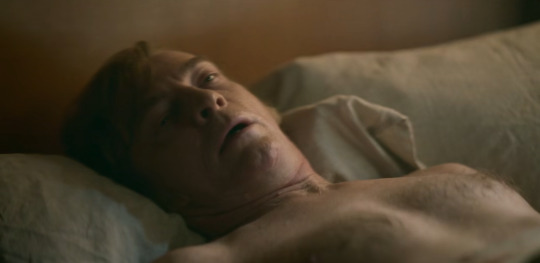
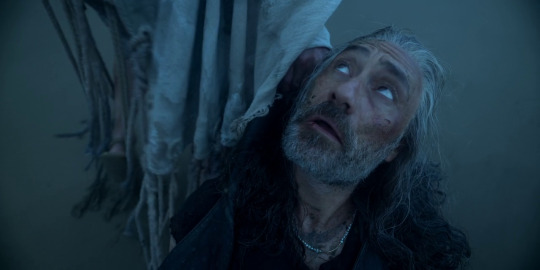
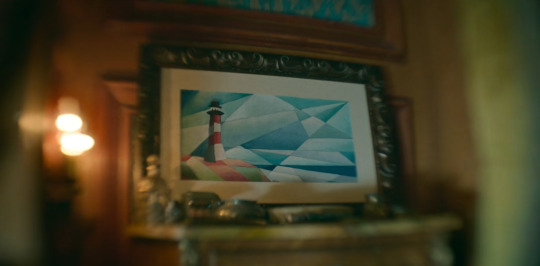
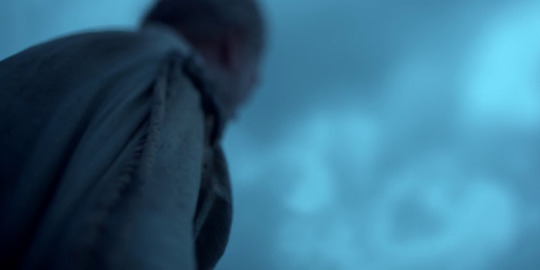

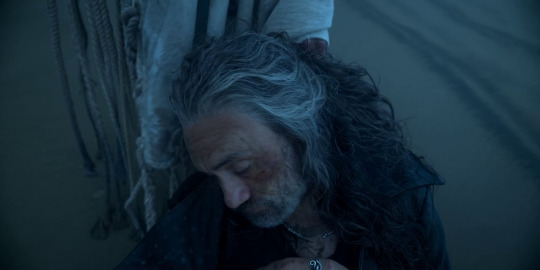
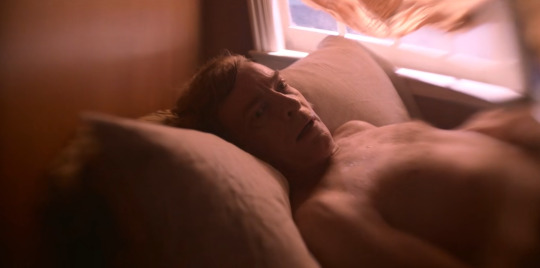

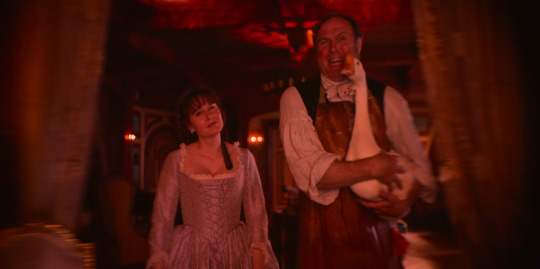

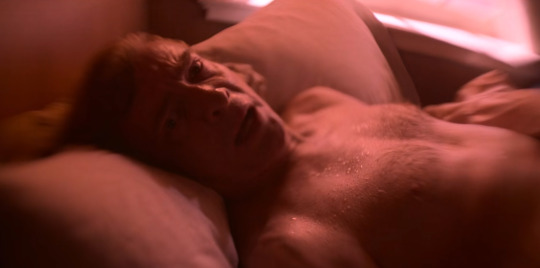
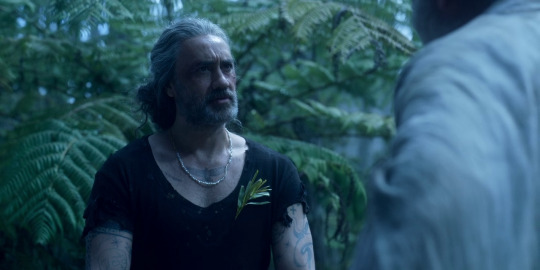

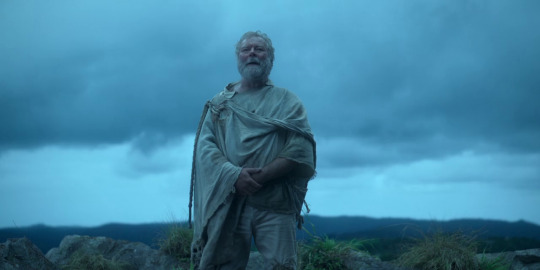
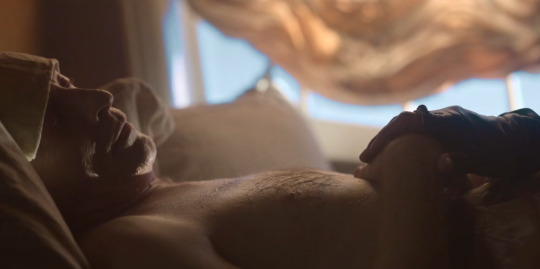

Betwixt Hell and High Heaven.
526 notes
·
View notes
Text
New Zealand’s Machine Learning (ML) Scene: Emerging Power in Niche Applications
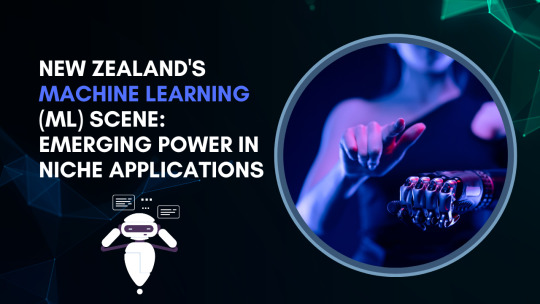
While New Zealand might not possess the number of established Machine Learning (ML) companies as larger nations, its AI landscape is experiencing exciting growth. This young and innovative ecosystem is carving a niche by focusing on specific challenges and opportunities relevant to the country. Read on if you are looking for an authentic list of 10 leading New Zealand companies leveraging ML to make a significant impact:
1. Aurorait: This company champions the use of ML for precision agriculture. Aurorait’s solutions leverage satellite imagery, drone data, and ML algorithms to optimize crop management. Farmers can utilize these insights for data-driven decisions on irrigation, fertilizer application, and pest control, leading to increased yields and resource efficiency.
2. Xero: A well-established cloud accounting software company, Xero integrates ML to enhance financial management for small and medium businesses. Their ML-powered features automate tasks like expense categorization, invoice processing, and financial forecasting. This allows businesses to save time, gain valuable financial insights, and make informed decisions.
3. Vee Technologies: Vee Technologies leverages Machine Learning to optimize business processes across various industries. Their services include meticulous data analysis to extract patterns and generate useful insights, predictive modeling to accurately anticipate future trends, and automation of repetitive tasks making use of machine learning algorithms. The technical team at work here has won over a remarkable client base with capabilities in Natural Language Processing or computer vision.
4. Inovo Robotics: This company focuses on developing intelligent robots for agricultural and industrial applications. Their robots leverage ML algorithms to perform tasks like weed detection and removal, fruit picking, and automated inspection in factories. Inovo Robotics’ solutions aim to improve efficiency, reduce labor costs, and increase safety in various sectors.
5. Kea AI: Specializing in natural language processing (NLP), Kea AI develops ML-powered tools for Māori language revitalization. Their solutions utilize NLP techniques to translate documents and resources into te reo Māori, promote language learning, and contribute to the preservation of this cultural treasure for future generations.
6. Orca Logic: This company uses ML for intelligent document processing. Orca Logic’s solutions automate tasks like document extraction, data entry, and contract analysis. Their ML algorithms can handle complex documents and unstructured data, enabling businesses to streamline workflows, improve data accuracy, and make better data-driven decisions.
7. GeoSLAM: This company specializes in 3D spatial mapping using LiDAR technology and ML. GeoSLAM’s solutions create highly accurate 3D models of environments, useful for applications like construction planning, infrastructure management, and disaster response. Their ML algorithms optimize data processing from LiDAR sensors and ensure high-quality results.
8. Astranomics: This company leverages ML for automated analysis of astronomical data. Astranomics’ solutions use ML algorithms to identify and classify celestial objects, detect transient events like supernovae, and accelerate scientific discovery in the field of astrophysics. Their work contributes to a deeper understanding of the universe.
9. FabRX: This innovative company focuses on developing personalized wound dressings using 3D printing and ML. FabRX leverages ML algorithms to analyze patient data and create customized wound dressings based on individual needs. This personalized approach promotes faster healing and improved patient outcomes.
10. EMBRYO: This company utilizes ML for environmental sustainability. EMBRYO uses ML-powered solutions for tasks like monitoring endangered species populations, optimizing resource management, and predicting environmental risks. Their work contributes to conservation efforts, promotes responsible resource utilization, and paves the way for a more sustainable future.
Unique Focus of New Zealand’s ML Landscape
One of the defining characteristics of New Zealand’s ML ecosystem is its focus on specific needs and opportunities. Here are some key aspects:
Agriculture: As a major agricultural exporter, New Zealand is fostering ML solutions for precision agriculture, aiming to optimize resource use and enhance yields.
Sustainability: With a strong focus on environmental protection, New Zealand’s ML applications are geared towards tasks like endangered species monitoring and resource management.
Indigenous Language Revitalization: ML is playing a vital role in revitalizing te reo Māori, the indigenous language of New Zealand, by facilitating translation and language learning.
The Road Ahead
New Zealand’s ML landscape is poised for continued growth. With a focus on innovation, collaboration between stakeholders, and addressing unique challenges, New Zealand has the potential to become a leader in specific areas of ML that hold global significance. As technology matures and investment increases, we can expect to see even more exciting developments from this dynamic ecosystem.
Conclusion:
New Zealand’s Machine Learning (ML) landscape, while relatively young, is demonstrating a remarkable ability to perform very well. By cleverly leveraging ML to address its unique national priorities — agricultural efficiency, environmental sustainability, and indigenous language revitalization — New Zealand is carving out a niche for itself in the global AI space. This focus on specific challenges fosters innovation and positions New Zealand to become a leader in these crucial areas. With a collaborative approach, continued investment, and a thriving research base, New Zealand’s ML ecosystem is poised for exciting growth in the years to come.
0 notes
Text
Week One: SDL
For our week one SDL we were tasked to begin collecting visual examples from other creatives. Bringing at least 10 to class for next week. This is including both works from creatives we know and are already influenced by but also works that we see around us in the public and then finding the designers behind the pieces. Below are my 10, these also fit under creative communities and styles that I feel like are beginning to shape me as a designer.
Public: The images below are from all around the city, it is a route I take almost every day to school but I have found myself lacking curiosity and not taking in what is around me, this SDL task gave me a reason to be curious and ended being very influential.
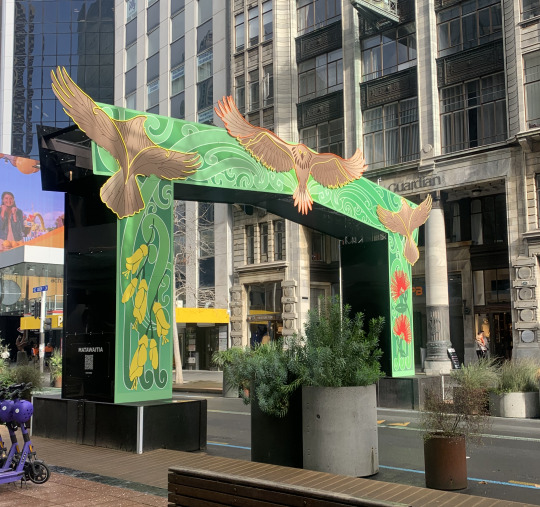
1. Creatives: Graham Tipene, Ataahua Papa & Angus Muir.
This instillation was on Queen Street it was there to celebrate Matariki and honouring the narrative of our kaupapa and the history of Tāmaki Makarau.

2.Creatives: Fuman Designs https://fuman.co.nz
Fuman is a multi-disciplinary design studio, based in Auckland, New Zealand. We specialise in branding, packaging and digital design.


3.Creatives: Shane Cotton
Cotton is a New Zealand painter whose work explores biculturalism, colonialism, cultural identity, Māori spirituality, and life and death
https://britomart.org/shane-cotton/

4. Creatives: Maui studio’s https://www.mauistudios.co.nz
Spark has collaborated with kaupapa Māori production studio, Māui Studios, to create digital art that brings to life the stories of the nine Matariki stars.
5. Paul Rand

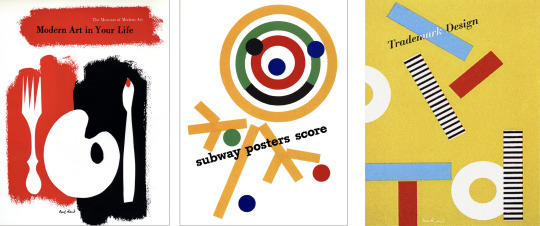
Paul Rand was a leading figure in twentieth-century graphic design. He helped revolutionise commercial art in America during the 1930s, advocating the functional yet beautiful designs envisioned by European modernists. I was introduced to Paul Rands work when I was in college and immediately loved the style. He has produced a wide range of work, from posters, publication, logos and so on. His style is fun and really emphasises the beauty of simplicity.
6. White Rabbit


White Rabbit is a full-service graphic design agency that provides a dynamic range of creative services. Hop to us for World-class branding, digital, print and illustration design. Discover our capabilities below. I love to look at different design studios such as white rabbit as there works are so different and diverse in the topics and in the style, it shows that as a designer you are able to do a wide range of things with the skills we are learning. https://whiterabbit.nz/capabilities/
7. curios studio


Curious is an independent Auckland based design and brand strategy agency. Focusing on brand design. https://www.curious.co.nz/our-services-1
8. Pete McDonald
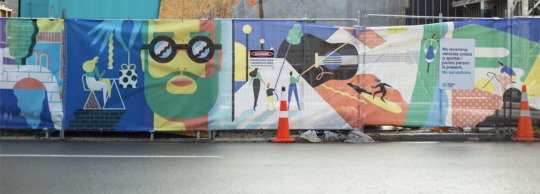

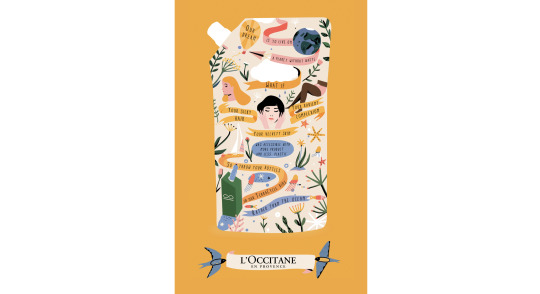
Pete Mcdonald is a Christchurch-based freelance designer, illustrator and animator who has created a massive and massively varied body of work. I have recently come across his work. I love his illustrative style as it adds a lot of personality to not only brands but around the public.
https://www.petejmcdonald.com
9. Studio Akin

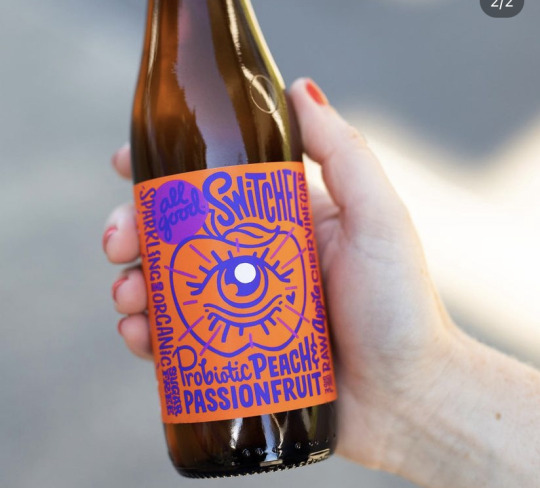

Atkin is another design studio that I have crossed and found quite influential. similar to the other studios there is a range of work and styles throughout their cite. I specifically love thievery graphic and illustrative styles that add a bit of fun to something as simple as the oat milk.
https://www.instagram.com/wearestudioakin/?hl=en
10. Moshimoshi classroom (Aya Yam)
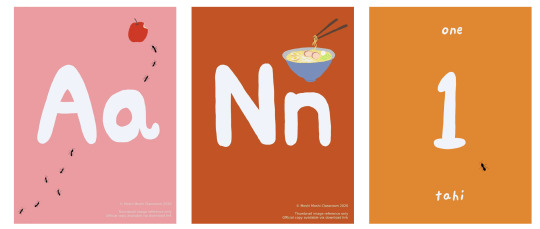


Moshimoshi classroom run solely by one person. I was introduced to this work as she is a friend of my Mums. The work produced is in a distinct graphic and playful manner as it is made to be a resource for teachers around Aotearoa. To teach diversity and basic knowledge on Māori culture and our countries culture. I have always loved this specific style, the playfulness making it accessible for younger audiences but still informative for older generations.
0 notes
Text
but also bouncing off of this with ed, racialized masculinity, and rage (and i'm using that term specifically and for a reason) one of the other parts i think is fascinating is the way that rage is dangerous. not to an individual but to the oppressive structures surrounding us.
moc and anger is something that has always been policed and their image in media has to be crafted to fit a specific ideal. i'm taking a look at this through the lens of a biracial african-american, but if you look at the history of how black men are depicted in media you see a stark change occur upon the abolition of slavery. during slavery, the image of enslaved people that was promoted were those of a happy and content group of people. they were infantalized and portrayed as child-like and mentally deficient. you can see gone with the wind as an example of "the happy slave" myth. there's a great teen vogue article you can read if you wanna see more about the myth and how it relates to current pop culture. you can also read more about caricatures and the way they're still normalized currently with mascots of aunt jemima and uncle ben in this op-ed. but like all caricatures, they serve a purpose and fulfill a need of white supremacy. when it came to the happy slave, it was to push the idea that black people were content in slavery, that slavery was a civilizing process that was actually white people helping them, and that the only kind of work black people were capable of is physical labor, that any other kind would make them unhappy.
you can see similarities actually with the way māori men are spoken about and locating their use to physicality. when māori schools (in traditional western sense) were first opened, māori students scored just as well as the european lead schools. white people actually literally forced them to change their curriculum to be labor based completely because anything else was thought of as too complex for their simple minds or some bullshit like that. there's a great paper by brendan hokowhitu "The Death of Koro Paka: “Traditional” Mäori Patriarchy" that goes in depth about the white supremacist fetishization of māori physical labor.
in the same way that māori school curriculums were changed, the happy slave myth was a way for white supremacy to maintain a status quo that naturalized using poc for hard labor while patting themselves on the back for doing them a favor. for a long period of time in america, black rage and anger was erased. it was hidden from white eyes to shield them from having to face the reality of their brutalization. this is why frederick douglass was so revolutionary, btw. he pulled back the curtain on the myth, showing these caricatures as the shadow puppets they were, forcing white people to look at the brutality they were inflicting on real human beings.
the abolition of slavery changed this image. it's like it underwent a PR campaign overnight (which it kinda did) where suddenly pictures of slaves singing with huge grins were replaced with the image of animalistic, out of control, absolutely furious black men. part of this was from a white paranoia projecting their anxiety that black people will come at them for revenge from slavery. but the main reason for this was because of a caveat in abolition that still allowed slavery in the case of incarceration. (the 13th is a documentary on netflix that goes in depth on this!) you can't say that you're enslaving people because they like it and it makes them happy anymore, so what do you do? you change that narrative. it's not to keep them safe, it's to keep you safe especially your women safe. jim crow laws are rolled out, black men in the south are either incarcerated or lynched (the great migration from the south was fleeing white terrorism!) the myth of the angry, violent, savage negro takes form.
the point i'm making related to ed, beyond the history lesson, is related to that idea of white fear of moc's anger. when we talk about the anger of moc, we don't erase it. that's already happened before, and it was used against us. instead we lean into the idea of what makes white people so fucking shook at the idea of an angry moc.
a huge part of this that i think is very relevant to ed is the need for the state to control him. piracy is disruptive as fuck. a huge portion of pirates were ex-navy who left because they no longer wanted to put up with how fucking shitty the navy is to their men (no, it wasn't for radical reasons 😭) piracy also had a large amount of black people fleeing slavery too! one of the reasons black pirates were so scared of capture was because unlike their white counterparts, they wouldn't be hanged, they'd be brought to plantations. if you want to read an interesting article about piracy and race i'd suggest this one! it's untrue to say that piracy was an aracial utopia, but the history of it is complex and fascinating. (fun fact, blackbeard actually gets cited sometimes as one of the pirate ships that were a lot more equitable with race where the famous pirate black ceasar served upon his ship. this does not mean blackbeard wasn't horrifically racist. he still sold slaves and raped black women. do not mistake this for him being an antiracist legend)
pirates were able to operate outside of state control and this was terrifying. at times, they would work with the navy, also a fun fact. hornigold is famous for attacking spanish ships and leaving the british ones alone, meaning england just kinda looked the other way lmao.
but for ed (the character) i think this is what grants blackbeard so much power in a way that just plain old edward teach would never be able to harness. all the way up the chain, blackbeard is feared, and blackbeard is respected. the mere chance that blackbeard would be willing to take an act of grace and concede that power to the king is so lucrative that even an admirals subordinates are willing to go against him for it. to have blackbeard under english control is the greatest propaganda anyone could've offered them.
i think i said this yesterday, but as a powerless child being told that he can't have fine things, that's just how it is, it can feel like your only two options are either anger or despair. ed chose anger, and by doing so, ed chose survival. he can despair over his surroundings or he can get angry, say fuck this, join a pirate ship, and go ham. he can despair over his mother's abuse, or he can get angry. angry that she's treated like this. angry that his father is so cruel. angry that there is nobody who is willing to help them. angry enough to kill your father. not because ed is, at his core, a violent person, but because, at his core, he's a loving one who will kill off a part of himself if it means keeping his mother safe. ("when you kill, you die as well.")
and not just anger, but rage? it's powerful. it's the natural conclusion for having even the slightest awareness of your circumstances as a moc, and it's in the states best interests to quell that as much as possible. not to be like "malcolm x said" but also malcolm x said "Usually when people are sad, they don't do anything. They just cry over their condition. But when they get angry, they bring about a change." and i think there's something to that with ed, where he's trying to change the circumstances of his life to no longer be a nobody. that anger has served him well over the last few decades, his path has scorched a legacy, but it's also burned him out on the way. something stede offers to him alongside retirement is the possibility that he may be able to let that go. doesn't have to hold onto that anger anymore and wield it like a weapon. maybe love can be enough?
and in this case, it doesn't work out for him. there's many reasons why, but a big one is that ed hasn't yet done the introspection necessary to move forward. he struggles with acknowledging his past (he frequently forgets his acts of cruelty) and although he may be ready to let that go, it's not so easy. it clings to him. also why i think izzy's role is so important and not just black and white villainy. what he and izzy had worked. for decades it served them both well. but now it doesn't anymore and ed wants to let that go, but it isn't that easy to sweep it under the rug and pretend it never happened. izzy is his reminder of that, good and bad.
i mentioned malcolm x earlier, and it feels worth it to bring up how much a disservice history does to his legacy where he's painted as angry with no other nuance. they called him the angriest negro in america. there's also a fascinating legacy within the black male community of attempting to claim him for black masculinity at the expense of others, but malcolm x was also a loving husband and father, and a huge proponent for self-love. his love was complex, and it was only after he began to start making connections globally and start advocating for a more nuanced approach of black radical politics that he was assassinated.
ed is angry, and in that anger is power, but it's also exhausting. he wasn't wrong that love and vulnerability is something that will heal him, but he also hadn't yet done the work of examining his own internalized self-hatred, despair, loneliness, and anger. he's not going to have a fairytale ending where stede swoops in and rescues him from the evils of piracy, but will need to dig deeper into his emotional roots and connect with that same complexity of love that figures like malcolm x embodied.
this will probably look different for ed though since there are māori practices specific to that self journey of healing. Te Whare Tapa Whā is a model of health and wellbeing that takes a holistic māori and indigenous approach to health that positions five tenets as necessary for one's health.
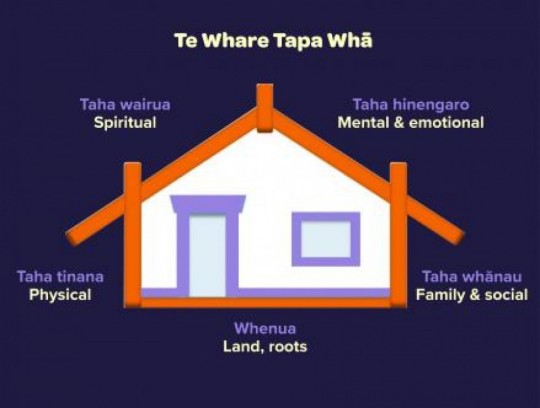
i don't feel like i can do it justice summarizing it since it's focused on five culture specific concepts, but here's a neat link!
this is something i try to keep in mind when writing ed and his healing. even if i'm not naming the model specifically, i think it's great to check back in on "is ed getting these five needs?"
i would highly recommend reading more about māori approaches to mental and physical health where the trauma of colonization is something that is brought to the forefront of needing to be addressed to heal. not only that, but how strong a backlash this receives from white groups because acknowledging that pain and history is dangerous to white supremacy.
but ed's relationship to emotion is something i really love about the show. rage and anger threatens the control of the british empire. it wreaks havoc across the seas and makes a mockery of their power. with ed though, when he's able to take control over the navy and for a brief moment becomes the most powerful person on that naval ship, is the act of grace. an action born from his love of another person. it feels so? hopeful and kind. and it wouldn't hit as hard if there weren't those moments of pain. after all, ed's desire for softness becomes all the more meaningful when we know he's use to only being treated roughly. that contrast is what keeps us feeling.
210 notes
·
View notes
Text
Hi! I would not agree, that Jules Verne is - I'm looking for a word - totally-non-progressive. I'd like to point out that I also read between the lines and saw these things you've described. CONS: Jules Verne was a child of his times, if that is correct phrase in Eng. His sin was half-ignorance - he kinda believed in white - especially white scientist and kinda "truth seekers" high morale and reason. How the truth look like - we all know.
This is a good point!
The reason I said he "repeats the racist beliefs of the day", as opposed to "he's a racist" is that, as far as I know, Jules Verne didn't travel much - and when he did, he tended to travel around Europe. He had no direct contact with the people or places he described in his works, and thus relied on others to describe them.
So you get descriptions of New Zealanders as bloodthirsty cannibals ripping corpses to bits in a frenzy. He doesn't think of "savages" in the way he would of Europeans, as people with their own side of the story, their own reasons for doing what they do, etc.
I'm not blaming him specifically for it, because it's easy to believe this if everyone else believes it.
However, this means that I can't recommend him to others. We're much more aware of colonialism and we can see the horrors behind the upbeat adventures in his novels. They strike very differently today than they did in the 19th century, so his works didn't age as gracefully as they might have.
Mind you, when I say "I don't recommend him", I don't mean "don't read him". I just mean "I'm not sure you'd have a good time".
PROS: If you'd consider reading "300 miles…" and this novel backstory, maybe you'd slightly change oppinion. Slightly, because Verne spoiled much - on the other hand, he was made to change his main hero nationality by cenzorship. Question is, if it's not Nemo character and story being more complexed than Verne originally meant? In the end: we should read Verne as we read all the books from this period - carefully. If we won't, we will miss something important.
I think captain Nemo is an interesting character - and it shows Verne is capable of empathizing with people on the bad side of empires and colonialism, even presenting their stories in a more complex manner. But Nemo is closer to home; even in his later variant as an Indian prince, he comes from a culture that's described more favorably by travelers. There's some interest and fascination for Indian culture in Europe, and a lot of contact with it thanks to the British.
People such as the Māori didn't have that advantage, so Verne is more likely to depict them as wild savages - or, alternately, noble savages (such as the Native the group meets in Patagonia).
It's worth reading Verne carefully. However, if you're just starting out reading 19th century adventure novels, he's not the author I'd start with.
Hey, do you know how meanings change in time?
Sometimes things that used to be obscene are now quite normal: "penis" used to mean "tail" in ancient Latin, but it started getting used as an obscenity. Today, because it's Latin, it's just the non-exciting name for the thing.
At other times, things that used to be normal are now read differently? Like the Flintstones having "a gay old time".
So. I've been reading Jules Verne lately.
I don't recommend him, because he's: a) a writer of geography masquerading as an adventure novelist; b) repeating all the racist beliefs of the day with absolutely zero awareness that people far away are still people; c) the quintessential "this is how old writers wrote women" author. (Most authors tend to see them as people, but not Jules Verne!) d) he doesn't do characters.
HOWEVER. In "In Search of the Castaways", I came across something that probably read as an amusing anecdote to contemporaries, but today it looks like heavy-handed gay symbolism.
The story of the book is this: a message in a bottle is found. Captain Grant has been shipwrecked somewhere on the 37th parallel in the Southern Hemisphere, and a group of Scotsmen led by a noble and brave Scottish laird go search for him. They're joined by the distracted Jacques Paganel, a brilliant French geographer who boarded the wrong ship.
Together they cross Patagonia and Australia, and when they reach New Zealand, they get captured by a Māori tribe. Paganel manages to escape, only to be captured by a different tribe than everyone else. When he gets reunited with everyone else, he's very reluctant to explain what happened. He's fine; he's talkative and his usual self when the topic is anything else, but he's absolutely not willing to talk about his time in captivity in any detail.
Finally, his friends learn this:
the chief of that tribe took an instant liking to him
he was greeted by the chief rubbing his nose against him
the chief bound him to himself with ropes
and those ropes were *especially binding* at night
but finally, Paganel escaped
I mean... I'm not the only one snickering, right? This looks like a walk of shame.
Anyway, the crew returns to Scotland. They're all heroes, including Paganel, who's courted by many women. He likes one, but he's very, very reluctant to marry her. He feels that he's "unworthy" of her. He simply can't marry her! Because of a great secret!
A friend finally pries the secret out of him: Paganel got a tattoo in New Zealand. It's of a giant kiwi with wings outstretched, digging its beak into his heart.
Friends. FRIENDS. I'm quite sure a "kiwi" wasn't another name for a New Zealander back in the day, but omg. If I did this in a book, people would accuse it of being so transparent it might as well not be symbolic at all.
I highly doubt this is what Jules Verne meant with that scene (he was probably just throwing in a bit of humor), but omg. It reads very differenly in the 21st century. I found it a bit funnier than the author intended, I'm sure.
12 notes
·
View notes
Text
I just got back from seeing Avatar: Way of Water and I’m about to make it everyone’s problem.
First off, the movie was absolutely visually stunning. The planet, the locations, the animals, all of it was gorgeous. Some of the most gorgeous shots I’ve ever seen.
I loved the Metkayina designs. They were clearly designed with water life in mind—the wider tails, wider arms to allow for better swimming. I also noticed inspiration drawn from Māori tattoos for their facial markings.
I loved all the kids, but Spider is definitely my favorite. It just makes me so sad that this kid has grown up never fitting in with the humans or the Na’vi and has been barely tolerated by most adults in his life. I have a lot of thoughts on Spider, but that’s a whole separate post. Basically I love him, I want him to be safe, and he’s a kind kid with a big heart and I’ll defend him to my dying day.
Kiri is a close second favorite. I was literally thinking “are there autistic Na’vi?” Before watching this and I kind of got my answer. Yes, i do 100% see Kiri as autistic. Also she’s canonically epileptic, which I thought was interesting. I just want more disabled characters that are interesting and contribute to the story, and she delivers. I also think it’s so cool that they gave her such a close connection with Eywa (no I don’t have religious trauma leave me alone). My only complaint is that Sigourney Weaver’s voice doesn’t…sound like a teenager’s voice to me. She plays the part very well, but her voice throws me off a bit.
I think it’s very interesting what they’ve done with Quaritch’s character. By making him a clone, you basically start over. He’s got all the memories but basically only a year or so of life experience and a lot of that influences how he interacts with the world, especially Pandora since he’s experiencing it from a new angle. He also noticeably softens toward Spider and while it may have started as manipulative, I do think he genuinely cares for Spider by the end. He reminds me a bit of early-show Zuko, and I can see him getting redeemed through his bond with Spider. I really want to see him link with a Spirit Tree, the existential crisis it would cause would make for great writing.
I don’t feel that Jake has been super poorly written, but I feel that we’re seeing him acting in survival mode so I don’t know what his relationship with his kids is usually like. I understand why he would revert to military training in a time of crisis.
I do feel like Jake has forgotten what it was like to be human in some ways, like he’s forgotten that he wasn’t always Na’vi. He does great his boys like they’re soldiers under his command, and I feel like his treatment of Spider shows just how much he’s forgotten what it was like to be human. What it was like to live in a world that wasn’t compatible with his body.
I also feel like Jake doesn’t have a full grasp of Na’vi culture still, and he sometimes overrides Neytiri when he should listen to her experience. Again, I understand the reasoning, it just annoys me.
Neytiri got shoved to the side a bit, in my opinion. She was in character, and I understand all of her responses, but I felt that Jake didn’t always treat her as an equal or value her knowledge enough. I don’t quite have words for how her emotions impact her character, but they’re all very impressed words. Just wow.
The tulkun are so cool to me. It started out as just kind of a whaling story, but you realize that these creatures are sentient, they’re capable of thought, they’re deeply intelligent beings. They’re people, plain and simple. And seeing the whaling analogy paired with the fact that these creatures are people, it made me nearly cry. Seeing them being murdered and their bodies desecrated for a tiny bit of profit had me cringing in my seat and made me so angry.
Random thoughts in no particular order:
Tsireya is so pretty I love her. She reminds me of a fantasy Elf for some reason.
Quaritch attempting the “death by thighs” move was unexpected, but not entirely unwelcome. I’m used to seeing femme fatale characters use that move, and I’m pretty sure I was blushing.
All of the Sully boys have daddy issues now, and Spider also has mommy issues
The “why so blue?” dad joke and Spider getting the one “fuck” of the movie made me laugh
#avatar way of water#oh look I’ve developed a new interest that’s gonna take over my life for the next few months
48 notes
·
View notes
Text
Tapatoru Ako Professional Practice: Empowering Tertiary Education with Ako Aotearoa's Innovative Programme
Explore the 2023 advancements of Ako Aotearoa's Tapatoru Programme. Discover how it's reshaping tertiary education in NZ with inclusive, culturally-rich content. Join the conversation on fostering a diverse and future-ready educational workforce
Tapatoru Developments Let’s dive into something exciting that’s shaping the future of tertiary education in Aotearoa New Zealand. Yes, I’m talking about the latest buzz in town again – Ako Aotearoa’s Tapatoru Programme. For those of you who’ve been following, this is part three of our deep dive, and trust me, it’s a game-changer! You can go back and check out part one and part two if you…

View On WordPress
#Ako Aotearoa#Aroha#cultural values in teaching#Educational Accessibility#Educator Development#ESOL Teaching#Inclusive Education#literacy and numeracy#Manaakitanga#Māori Cultural Capability#New Zealand education#pacific cultural centredness#Pathways Awarua#Tapatoru Programme#Technology Enhanced Learning#Wairuatanga#Whanaungatanga
0 notes
Text
@ekjohnston To say that Sister is “not [actually] Polynesian, because Star Wars” discounts and disrespects the huge amount of work that Mr. Temuera Morrison has done to bring his own culture into the franchise and to show that Jango & the clones ARE Polynesian, ARE Māori. You are capable of using your platform to encourage that representation, rather than disregarding it. You have the opportunity to do research, to talk to Māori people and let them help you represent their culture correctly and beautifully in the stories you make. Please listen to the Polynesian people who are trying to tell you how important that is.
Trans representation, just like every other kind of LGBTQ+ representation, is incredibly important and valuable, but we must not allow it to come at the cost of the erasure of other marginalized identities.
115 notes
·
View notes
Note
pumpkin (i think i know the answer but id love to see your specific take on it bc you have a very beautiful and vivid way with words)
my beloved hello!!
pumpkin - do you think humans are inherently good or bad?
i think that too many people consider this a difficult question, but i pretty firmly believe that humans are good.
I think that all of the awful things humanity is capable of, is a product of our manufactured environment, that it's not the fault of humanity as a whole for how the earth is suffering. We're curious and inventive creatures and i think that lots of people find themselves backed into corners they aren't even aware of. That others have been conditioned to think and act a certain way and believe in certain things.
Y'know, obviously there are bad people in the world, selfish, cruel, greedy people who are privileged to live in societies designed for them; or who are just plain tired and hurt and find it easier to hurt others in return, but to claim humanity as a whole is inherently bad? Nah.
Look at the way communities band together in a crisis- when the government failed to step up during the fires a few years ago, it was the rest of the australia that offered their help, that sent supplies and volunteers and raised awareness. Look at how many people join protests and marches and fight for positive change, how many people put out posts online asking for help because they know that someone will help.
And then look at indigenous cultures! There is such immense love and respect for their communities, and the whenua (which, another point towards humanity being good, in te reo māori, whenua is the word for 'land' and 'placenta'. they are intrinsically connected.)
There's this thing in māori culture, about how wahine aren't meant to touch water while they're menstruating or something, and i remember watching this tedtalk by this māori youth worker and she was talking about her experience being apart of an immersive te ao māori (māori way of life, essentially) program, and she said that when the girls were on their periods, the boys would carry them from the waka to the shore so that they wouldn't get their feet wet.
A week or so ago my sister was telling me about this video she was watching, where this couple were acting out a fight scene in an alley, and this random bloke who was walking past only saw a man acting violently towards a woman and immediately got involved, started telling him to back off and leave her alone before the camera crew managed to get his attention and tell him it was only pretend.
two months ago i was walking down the street with my friends, and some guy asked sebastian for a drag from his smoke and then walked away with it and sebastian wasn't that pressed but the guys friend came up to us and i don't remember exactly what he said because i wasn't that sober but he was hyping sebastian up, telling him not to just let people take his shit, that next time he should curb stomp them, offering to go and get it back for him.
I read this out to my mum, because i wasn't sure if it made sense, and she added on with this: "Our first instinct as humans, is to protect children and to protect other people. Look at how many people spend their lives trying to protect wildlife." and. yeah.
not to mention, another word for 'humanity' is benevolence, is kindness is understanding and mercy.
So, yeah, do i think humanity is inherently good or bad? Absolutely, and i think we lean for more towards 'good' than 'bad'.
#hi <3#i hope this makes sense jkfhsjdf#i could bring up art and music and the entire concept of hobby-based clubs but i think that would've gotten away from me#humanity#asks#hella tag#hella1975
7 notes
·
View notes
Text
✨HELLO little gay people on my blog✨
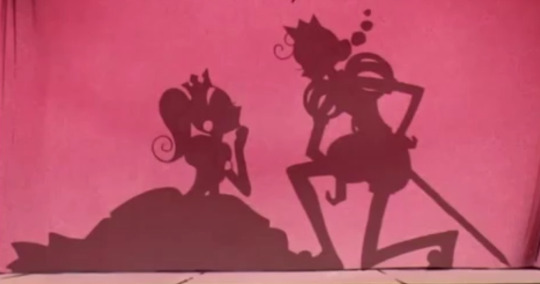
This is a little Intro Post because I can't be arsed to make a carrd
Basics:
Div/Tadpole b. 1999. They/She/He
Tamil + Southeast Asian
Currently living in Narrm, Australia on stolen Woiwurrung and Boonwurrung land
I am an artist and the best way to support me financially is on my Patreon!
Autistic
Transmisogyny Exempt
Fish Lesbian (But Div, what’s a Fish Lesbian? Click here )
தமிழ் + english OK!
I'm also trying to learn Te Reo Māori so if you happen to know it, or any Polynesian language let's korero!
Feel free to ask for discord!
*occasionally will post nsfw so under 18s not encouraged to follow*
Faves/Current Fixations:
Revolutionary Girl Utena🌹
Monster Hunter
Lesbian Culture
Collecting My Little Pony figurines
The Muppets + Sesame Street
Night In The Woods
Occasional Cinephile. Ask me about my Letterboxd.
Additional Notes:
I'm usually dense as a rock but if you need help with your essays I'm here for ya!
Don't hesitate to send me any fundraisers to boost!
Art is tagged as #tadpole draws, personal tag is #div yells into the void selfie tag is #tadpole face
As a darker skinned Dravida person, I live in a colonised, raciliased body. While not being of the African Diaspora, I still experience anti black racism. I am still, of course, capable of anti black, anti indigenous behaviour. And I appreciate being called out on that shit as it occurs.
BUTTTTT I’ve had white people and poc who don’t experience anti black racism weaponize this stuff against me and use it in a gaslighty, abusive manner. It’s not fun to have your own experiences of racism, or life in general, invalidated by someone on the internet. (So just be mindful of this if youre white and want to call me out on something)
thx for reading enjoy my mess xoxo
24 notes
·
View notes
Text
Professional Teaching Standards
The Standards for the Teaching Profession (STP) are established by the Teaching Council of Aotearoa New Zealand to know and develop high quality practices for teachers in their contexts.
The elaboration section of each standard in these post were elaborated by my Kaihāpai Nyra Marshall.
Standard 1: Te Tiriti o Waitangi partnership
Demonstrate commitment to tangata whenuatanga and Te Tiriti o Waitangi partnership in Aotearoa New Zealand.
Elaboration of the standard:
Understand and recognise the unique status of tangata whenua in Aotearoa New Zealand.
Understand and acknowledge the histories, heritages, languages, and cultures of partners to Te Tiriti o Waitangi.
Practice and develop the use of te reo and tikanga Māori.
Standard 2: Professional learning
Use inquiry, collaborative problem-solving and professional learning to improve professional capability to impact on the learning and achievement of all learners.
Elaboration of the standard:
Inquire into and reflect on the effectiveness of practice in an ongoing way, using evidence from a range of sources.
Critically examine how my own assumptions and beliefs, including cultural beliefs, impact on practice and the achievement of learners with different abilities and needs, backgrounds, genders, identities, languages and cultures.
Engage in professional learning and adaptively apply this learning in practice.
Be informed by research and innovations related to: content disciplines; pedagogy; teaching for diverse learners including learners with disabilities and learning support needs; and wider education matters.
Seek and respond to feedback from learners, colleagues and other education professionals, and engage in collaborative problem-solving and learning-focused collegial discussions.
Standard 3: Professional relationships
Establish and maintain professional relationships and behaviours focused on the learning and well-being of each learner.
Elaboration of the standard:
Engage in reciprocal, collaborative, learning-focused relationships with: learners, family, and whānau, teaching colleagues, support staff, and other professionals agencies, groups, and individuals in the community.
Communicate effectively with others.
Actively contribute, and work collegially, in the pursuit of improving my own and organisational practice, showing leadership, particularly in areas of responsibility.
Communicate clear and accurate assessment for learning and achievement information.
Standard 4: Learning-focused culture
Develop a culture which is focused on learning, and is characterised by respect, inclusion, empathy, collaboration, and safety.
Elaboration of the standard:
Develop learning-focused relationships with learners, enabling them to be active participants in the process of learning, sharing ownership and responsibility for learning.
Foster trust, respect, and cooperation with and among learners so that they experience an environment in which it is safe to take risks.
Demonstrate high expectations for the learning outcomes of all learners, including for those learners with disabilities or learning support needs.
Manage the learning setting to ensure access to learning for all and to maximise learners’ physical, social, cultural and emotional safety.
Create an environment where learners can be confident in their identities, languages, cultures, and abilities.
Develop an environment where the diversity and uniqueness of all learners is accepted and valued.
Meet relevant regulatory, statutory, and professional requirements.
Standard 5: Design for learning
Design learning based on curriculum and pedagogical knowledge, assessment information and an understanding of each learner’s strengths, interests, needs, identity, language and cultures.
Elaboration of the standard:
Select teaching approaches, resources, and learning and assessment activities based on a thorough knowledge of curriculum content, pedagogy, progressions in learning and the learners.
Gather, analyse, and use appropriate assessment information, identifying progress and needs of learners to design clear next steps in learning and to identify additional supports or adaptations that may be required.
Design and plan culturally responsive, evidence-based approaches which reflect the local community and Te Tiriti o Waitangi partnership in New Zealand.
Harness the rich capital that learners bring by providing culturally responsive and engaging contexts for learners.
Design learning that is informed by national policies and priorities.
Standard 6: Teaching
Teach and respond to learners in a knowledgeable and adaptive way to progress their learning at an appropriate depth and pace.
Elaboration of the standard:
Teach in ways that ensure all learners are making sufficient progress, monitor the extent and pace of learning, focusing on equity and excellence for all.
Specifically support the educational aspirations for Māori learners, taking shared responsibility for these learners to achieve educational success as Māori.
Use an increasing repertoire of teaching strategies, approaches, learning activities, technologies, and assessment for learning strategies and modify these in response to the needs of individuals and groups of learners.
Provide opportunities and support for learners to engage with, practise, and apply learning to different contexts and make connections with prior learning.
Teach in ways that enable learners to learn from one another, to collaborate, to self-regulate, and to develop agency over their learning.
Ensure learners receive ongoing feedback and assessment information and support them to use this information to guide further learning.

1 note
·
View note